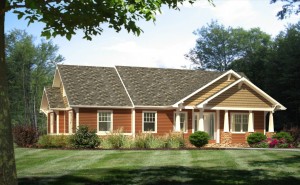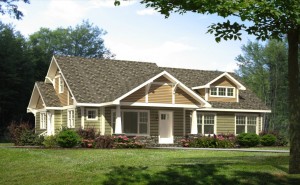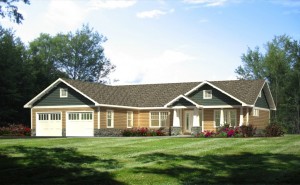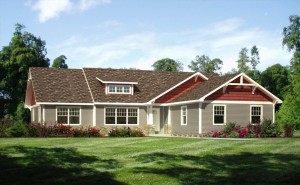The Craftsman Modular Home: An Architectural Bastion of Artistic Independence
The American Craftsman is an architectural style that emphasizes individual vision and an attention to detail not seen in other residential structures. It’s remained popular with homeowners for over one hundred years, due largely to its emphasis on a simple but elegant aesthetic.
Born out of an artistic movement that valued originality in creative pursuits and strayed from creating things that were of uniform appearance, a Craftsman home is an expression of an architect’s singular approach and the product of focused labor by a team of skilled construction professionals. It is by its very nature accessible: a pioneering work available to everyday people.
Let’s take a look at the history and unique design features of the Craftsman and consider whether it would make the right fit for your dream home.
History
As the 19th century gave way to the 20th, a group of British artists, architects and artisans — frustrated with the uniformity brought about by the Industrial Revolution — began to produce work that focused on individuality. The movement was also driven by a desire to move away from the ornate exuberance of Britain’s Victorian Era. The goal was to make well-crafted products accessible to a wider swath of the public.
An American contingent began to develop and was soon branded the American Craftsman movement. Craftsman homes remained popular Stateside for a couple of decades in the early twentieth century, eventually losing steam when easier-to-replicate homes like the rancher became more common as the nation’s population grew.
Design Features
Craftsman homes are often variations on the simple bungalow design. They feature exteriors of exposed wood beams and make ample use of stone and stucco siding, though brick craftsman style homes are also a popular variant.
Notable adherents of the Craftsman style include the architects Greene and Greene, designers of Pasadena, California’s “Gamble House,” which is etched into many moviegoers’ memories as the home of Emmett “Doc” Brown in the Back to the Future films. Other Craftsman architects include Julia Morgan, the brains behind California’s Asilomar Conference Grounds and Irving Gill and William Hebbard, responsible for the Marston House of San Diego.
Craftsmans share similarities with the works of Frank Lloyd Wright, whose “Prairie School” designs echoed many of the aesthetic statements made by Craftsman homes.





